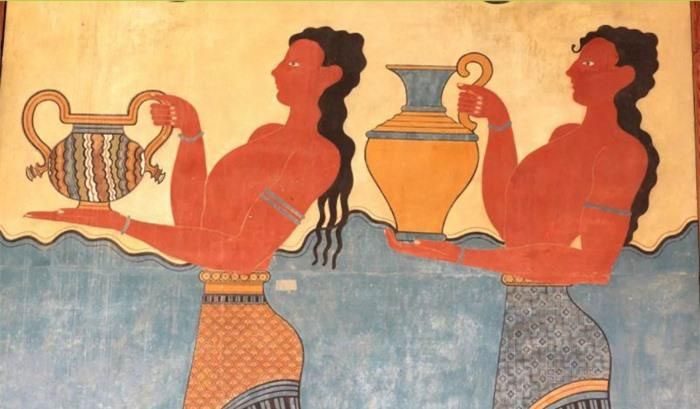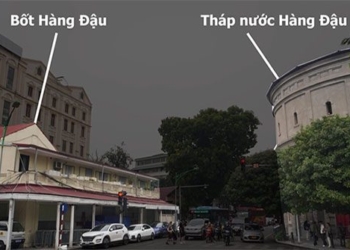Many great civilizations mysteriously disappeared during the Bronze Age around 3,200 years ago due to various reasons, such as invasions by the Sea Peoples, climate change, and the inevitable collapse of social systems.
In the 13th and 12th centuries BCE, ancient civilizations fell like dominoes. Once-great cities around the Eastern Mediterranean, North Africa, and the Near East became ruins, many writing systems disappeared, uprisings and wars broke out, and numerous cultures were eradicated.
The end of the Bronze Age is described as humanity’s first step towards creating a process of globalization, in which many ancient civilizations depended on each other for raw materials, especially copper and tin. They also traded goods made from ceramics, ivory, and gold. But all of this came to an abrupt and mysterious end.
Some of the most prominent and thriving civilizations during the Bronze Age included: the Assyrian Empire in Mesopotamia, the New Kingdom of Egypt, Babylon, the Hittite Empire in Anatolia, the Mycenaean civilization in Greece, and the Minoan civilization on the island of Crete. All these powers were scattered around the Mediterranean region.

A mural depicting people holding bronze items at the Palace of Knossos of the Minoan civilization, one of the cultures that collapsed at the end of the Bronze Age. Photo: Chubykin Arkady
Historians are still fiercely debating the exact cause of the so-called “collapse of the Bronze Age”, but it is clear that it was not a pleasant time for humanity. However, before the collapse, the Bronze Age was a relatively prosperous period in history.
The Bronze Age was a transitional period between the Stone Age and the Iron Age. True to its name, the Bronze Age civilizations possessed skilled techniques in melting and alloying copper. They also knew how to mix copper with other elements like tin and arsenic to create harder alloys.
Archaeologists have discovered the earliest evidence of copper smelting in the Fertile Crescent – a crescent-shaped region in southeastern Turkey, where the famous Mesopotamian civilization originated. The earliest traces of metallurgy can also be found here, particularly at the Yarim Tepe site in present-day Iraq.
Copper is a malleable metal, but it is much harder and more flexible than stone. Civilizations exploited the properties of copper to create weapons, tools, everyday items, and jewelry.
The emergence of a new material brought about many changes in the social life of ancient humans. They began to shift to a settled agricultural lifestyle, moving away from the nomadic hunter-gatherer ways of the Stone Age. Civilizations started building large urban centers, developing complex social hierarchies, and creating numerous new writing systems.
Over time, the increasing demand for copper led to the development of mining, metallurgy, and copper refining activities. Trade networks gradually formed to help people exchange tools and items made from copper more easily.
“We are talking about an area that today would stretch from Italy in the west to Afghanistan in the east, and from Turkey in the north to Egypt in the south. The entire region was completely interconnected,” said Eric Cline, a professor of anthropology at George Washington University.
However, around 1177 BCE, this prosperous network collapsed.
One of the most common explanations for the collapse is the emergence of the brutal invading Sea Peoples – a confederation of pirates that appeared at the end of the Bronze Age. The term “Sea Peoples” was first used by Egyptologist Emmanuel de Rougé in the 19th century. Due to scarce archaeological evidence and historical records about the Sea Peoples, their identities remain unclear and controversial. Historians believe they came from various maritime cultures, primarily residing around the Mediterranean region.
Regardless of who the Sea Peoples were, they left their mark, creating “hell on earth” across the lands they invaded in Anatolia, Syria, Phoenicia, Canaan, Cyprus, and Egypt during the end of the Bronze Age, between the 13th and 12th centuries BCE. Throughout this period, archaeological evidence shows that numerous cities in the Eastern Mediterranean and the Near East were destroyed or abandoned.
However, the appearance of these mysterious seafarers is not the whole story. Some argue that Bronze Age civilizations were decaying from within and collapsed systematically. Specifically, many kingdoms had a political structure that was “centralized, complex, and cumbersome” by the end of the Bronze Age, making them vulnerable to ongoing social changes and instability.
Another possibility is that the emergence of iron and new war weapons made battles between civilizations more brutal. Ultimately, they may have exterminated each other.
One equally intriguing explanation is that the collapse of the Bronze Age was related to environmental changes. In a study published in the journal PLOS One in 2013, scientists at Paul Sabatier University-Toulouse III examined pollen grains from sediment in an ancient lake in the region and found evidence of climate change during this period. The study’s authors argued that climate change led to droughts, food shortages, and widespread famine. This condition triggered mass migrations, social upheavals, and powerful civilizations became weakened and susceptible to invasions by the Sea Peoples.
The story of the collapse of the Bronze Age will never be fully illuminated by any single explanation. In fact, it may be a synthesis of all the factors listed above, with some playing a larger role depending on the specific region and civilization.
Whatever the reasons may be, the end of the Bronze Age serves as a reminder that no civilization that ever existed in the world can confidently assert that it will endure forever. With a combination of various factors such as climate change, war, disease, and the misuse of technological advancements, even the mightiest societies can collapse.




















































